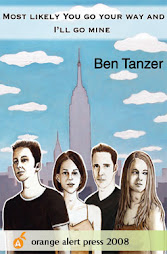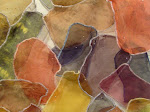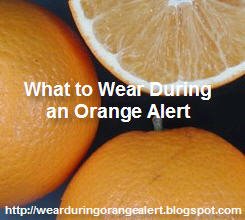
Rebecca Jacoby
Creative output as release is not an original concept, but exactly in what part of the creative process do you find therapy? Is it in that first brush stroke, or that perfect opening line to a story, or maybe it is the repetitive loop of the circle or the consistent revision. Perhaps your release comes when the piece is finally finished. Whatever or whenever the moment is, creativity and productivity are two of the purest forms of therapy.
Rebecca Jacoby is an artist who allows herself to relax and create, and through this process she is able to create an abstract world that bubbles just below the surface of reality. Her recent work focuses on the imperfect circle, with its odd shape and expansive center. The objects never quite fit together, bumping into each other, fumbling for space, but for a moment it all seems perfectly imperfect.
Recently, Rebecca was kind to answer a few of my questions.
Orange Alert (OA): How would you describe your work?
Rebecca Jacoby (RJ): I describe my work as Abstract Expressionist. In terms of method and style it comes from the Abstract Expressionist movement created, defined and honed by the artists of the New York School of the 1930s, '40s and'50s like Willem de Kooning, Robert Motherwell, Arshile Gorky, Lee Krasner, Jackson Pollack and others. Those artists, and early Modernistslike Vassily Kandinsky, impacted my visual growth very powerfully. I look at the work of those masters as well as contemporary work by artists as diverse as Robert Rauschenberg, Annette Messager and Matthew Barney. My work is as much about making the work – the process of creating imagery – as it is about the finished piece. As an expression of my unconscious so it can be seen as a sort of visual therapy - like a visual interpretation of dreams. In that regard, different people will often perceive regard the imagery differently: one person might see a face where another sees an animal. It is important that the imagery is visually pleasing, and "says" something without being overarching. The work is my own personal visual language and although what the imagery does and says –the colors, textures and shapes that make a finished work – is incredibly important to me, the work is really, in the end, about making the work.

OA: One theme that I have noticed in your recent work is the circle. What is it about the circle that lends itself to your overall artist goal?
RJ: The imperfect circle I repeat is a visual element that has been showing up frequently since about 1997 or so when I started printmaking. Up until then I had primarily been 'self-taught' - I drew a lot without having had major technical training. I was encouraged by my grandfather, who was a painter and whose brightly colored abstract work was (and still is) all around me growing up. But I didn't realize how much I wanted to make art until soon after leaving college, where I was a Philosophy major. Then I worked to fill in gaps in my knowledge and started printmaking, a very process-oriented medium, which I loved. After starting graduate school at Pratt Institute, I found I needed to lose many of the tendencies I'd come to rely on to become a better artist, which didn't happen overnight or easily. I worked to let go of the controls I'd developed by loosening my hand and arm and to using different drawing methods. From that came a looser style in which the imperfect circle made up more of the imagery. Making the circle is a very relaxing and enjoyable action, especially when repeated, and it appears a lot in my drawings, which I usually do at home in the evening. In my studio, where I work on large-scale mixed media paintings, the circle is less ubiquitous. I probably use circles more in drawings because they are more enjoyable to draw with what I use at home (less messy markers, pen, colored pencil, crayon) than with what I use in my studio (very messy oil sticks, oil and acrylic paint). But the circle has no particular meaning for me. It is a naturally occurring shape, pleasing to make look at and it lends itself to being juxtaposed well with other shapes. Of course, the circle does have meaning and could “mean" something in my work that I'm not aware of. For instance, I love old things that have succumbed to nature like peeling facades and buildings and things that are made of natural elements like old stonewalls. I recently saw a documentary about the artist Andy Gold worthy called (I think) Rivers & Tides in which he builds an amazing long, serpentine rock wall. The stones themselves are wonderful and the idea of thinking about piling and placing them together makes me want to draw. So perhaps the natural-ness of the circular shape as well as the way making it feels are reasons for its prominence in my work.
OA: In your artist statement you mention an "unquenchable impulse towards mark-making". How will you know when you have made your mark? Was it made the day the brush touched the first canvas?
RJ: Hmm... I think want to get rid of that "unquenchable". It might make me sound like I need to be institutionalized a little too much. What I mean is that my work is largely about process - making marks. By that I mea na literal mark – the mark a pen or piece of charcoal or paint brush makes when picked up and with pressure applied to it is used to mark paper or canvas. My desire to work visually isn't a desire to "say something" about something else visually - it isn't a social or political or any other kind of statement. I have in the past made work about my childhood home and certain feelings and emotions from childhood, and I do like conceptually based work and intend to do more of it. But the mark making is less leaving a mark on the world – "making a mark" as a symbolic gesture – as it is literal: picking up a mark-making "tool" like a big R&F oil stick and purposely using it to paint. So to answer the question, mark making is an ongoing part of my process and will never be finished because I will always be a visual artist and visual artists make marks. My mark making began the first time I painted but definitely didn’t end there.

OA: Do you find that you have a consistent color pallet or do you try to consistently mix in new colors and textures? Do you ever consider emotion that a particular color might invoke in the viewer?
RJ: In the past couple of years I have purposely tried to move away from Red and black, which I used for a long time. What happened is that I loved and used a lot of color all the time. Then at Pratt I learned a lot more about color, most importantly not to use color just for the sake of using color. Rather, a particular color should be used because of what it says and means to the piece. So one of the things I let go of was color. Once I'd dealt with black, white and everything in between, I starting adding back in color, but got stuck on reds, especially cadmiums. It took a long time for me to feel as though I needed any other colors to “say" what I wanted to say, so I stuck with reds and blacks (and some grays and white). Now I am re-discovering yellows and blues and although still using red I am no longer reliant on it. I was a red addict! I douse a lot of texture, through collage, in my work – I like for there to be depth and push-pull and collage creates that. And I do consider that red, especially, is a powerful, emotional color for most people. To me it is a color of strength and passion, which is what I hope people feel emanating from my work.
OA: In the last year I have met several amazing artists from Philly, what is your opinion of the current art scene in Philly?
RJ: Philadelphia is home to some fantastic artists, I agree. I have met and seen the work of many, many artists whose work has really impressed and motivated me. It remains puzzling why Philadelphia itself remains somewhat of a provincial art market and venue. Although there are some great places to see art, Philadelphia doesn't have a condensed and easily accessible neighborhood with a large number of high quality galleries akin to Chelsea in New York. I think that the lack of a larger number of really high-end galleries where art that pushes the envelope and is well showcased gets shown does limit Philadelphia as being seen as a reputable art market around the country and around the world. Creating a true art district would help make Philadelphia more of a force in the art world and start to equal New York in terms of the quality of work shown. The Crane Arts Building, where I've had a studio since 2005, houses studios, galleries and arts-related organizations and is bringing more people to the area north of Old City (which remains the de facto art district) called Northern Liberties. Another important factor is to have an art-buying segment of the population coming to Philadelphia the way they go to NYC or L.A. to buy art. Making Philadelphia a place that is seen has having world-class artists should be on the list of to dos for our new mayor, though whether or not it is I don't know. But it would generate quite the economic boost for Philadelphia, among other things. We have the talent, we just need the viewing (and buying) public.
OA: What's next for Rebecca Jacoby?
RJ: I'm going to keep making art. And I will be trying to reach a larger audience by applying for as many opportunities as possible to show my work. I am seeking gallery representation outside of Philadelphia in places like Chicago, Los Angeles and New York. The 'marketing' aspect of being an artist is the toughest and least understood outside of the art world. Sometimes people will assume that showing one's work is as simple as walking into a gallery and saying "will you show my work"? If only! Showing and selling one’s work in reputable venues is the most difficult part of being an artist. So next for me is, hopefully, for people to see more of my work nationally and internationally before long.

Bonus Questions:
OA: Coffee? If yes, what is your favorite type of coffee and where is your favorite coffee spot?RJ: No, sorry. Just tea – Barry's Irish tea which is good strong stuff. I used to drink a LOT of coffee but it stopped liking me, or my body stopped liking it, although my brain never did. I can still drink espresso, though, so on weekends I treat myself to something like a non-fat mocha latte. Something decadent to look forward to.
OA: Do you listen to music while painting? What type of music do you listen to and does it ever inform your work in anyway?
RJ: I absolutely MUST listen to music when painting. I have a penchant for good old rock-n-roll and will listen to stuff that really embarrasses people like my brother; Journey and Boston, say. I also listen to the Red Hot Chili Peppers, Pearl Jam – I never liked Pearl Jam when they first became popular. Then back in 2000 (when we were still free) I went to a Ralph Nadar rally (remember him? Makes me almost nostalgic…) at Madison Square Garden in NYC and Eddie Veder, among others, played a bit by himself – no band members. He blew the roof off the place.
I was floored by the emotional strength and impact of his powerful, amazing voice. I love funk and listen to old Stevie Wonder & Prince. I like Beck, Radiohead, Eryka Badu, Soul Live when I work too… A whole big mix of stuff. I like to listen to music that packs a whollup, is energizing and makes me feel alive and good and happy. I also like to sing along, pretend to be a rock star in the safety of my studio. There is no place I'd rather be than in my studio and nothing I'd rather be doing than working – it's when I am most alive. So I listen to my favorite music, sing along and rock out.
For more information on Rebecca Jacoby please check out her website.
+by+Nick+Volkert).jpg)





















No comments:
Post a Comment